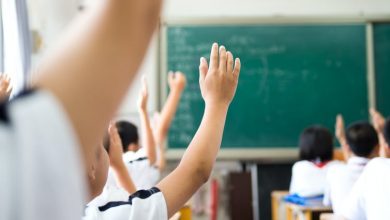Every Victorian Year 12 student will have COVID-19 factored into their grade — we should do it for all Australian students
Over the weekend, Victorian Education Minister, James Merlino, announced the individual impact of COVID-19 will be taken into account for every Year 12 student in the state when calculating their VCE score and ATAR.

Under usual circumstances, individual students are assessed for special consideration on a case by case basis. But this year, the Victorian Curriculum and Assessment Authority (VCAA) will introduce a “Consideration of Educational Disadvantage” process to recalculate VCE scores for every student, individually.
The authority may consider, alongside a range of formal data such as exam results, a student’s General Achievement Test (GAT), their expected achievement levels before the impact of coronavirus, and school assessments completed prior to remote and flexible learning.
At the heart of these announcements is an acknowledgement of individual differences. The premier’s website says it may also include
assessing the individual impact of coronavirus on each student, including school closures, direct impacts on the health of a student, students dealing with substantial extra family responsibilities, ongoing issues with remote learning and mental health challenges.
This kind of individual assessment is what educational advocates have been calling on for decades.
How COVID-19 has affected students
Victoria’s decision is intended to support worried students and soften the blow of the graduation implications complicated by the pandemic. Its social, emotional and psychological effects are being recognised alongside academic pressures.
Teachers and school leaders have put forth their best efforts to ensure all students have transitioned to online learning effectively. But the unexpected change may have led already vulnerable students, such as from lower socio-economic backgrounds who may not have reliable access to internet, towards further disadvantage.
Students already disengaged from school may have become more disengaged during remote learning. Teachers who completed a survey in Australia during the last remote learning period said many of their students were not logging in to remote classes or completing their school work. Teacher participants in another survey said student disengagement and equity were a key concern.
Teachers have also expressed concern about the emotional toll of remote learning on students.
Not all students have experienced adversity as a result of COVID-19. There are many who have thrived in home learning environments. Students who would typically experience social or separation anxiety resulting in school refusal, for instance, have found the online way of learning works better.
The initiatives taken by governments, such as the latest Victorian announcement, acknowledge the necessity to go beyond dry numbers and to account for individual differences — a step towards a more inclusive education.
It’s a human right
The United Nation’s Sustainable Development Goals establish the core underpinnings of quality education. Specifically, goal number four is to “ensure inclusive and equitable quality education and promote lifelong learning opportunities for all”.
Inclusive education is where all students of all capabilities have the opportunity to learn and express their abilities. Inclusion takes into account student circumstances, such as individual learning needs and health. These include well-being and behavioural challenges.
The UN Committee on Economic, Social and Cultural Rights (CESCR) committee has noted:
education has to be flexible so it can adapt to the needs of changing societies and communities and respond to the needs of students within their diverse social and cultural settings.
How can we do this?
Studies show teachers see school assessment as isolated, offering a limited understanding of the teaching and learning environment. Including as many aspects as possible in assessment processes seems to be more important now than ever. This might involve harnessing student perspectives or inviting parents into the conversation regarding their child’s progress.
Policymakers will assure student equity by providing clear grading guidelines. These can include acknowledgement of the need for special examination arrangements not only during a pandemic. They could enable the support of a health-care worker during a test, for instance.
Universities could also work with secondary schools and agree to consider entrance exams or portfolios that are relevant to the courses students are applying for.
Some people may be concerned the government proposal will not result in fair outcomes across the board. But for assessment to be truly fair, each student must receive the individual level of support they need.
The unfolding developments of the pandemic have opened a door for a more inclusive assessment in schools. Perhaps it is time to reconsider this practice beyond the special circumstances of an outbreak and beyond VCE students, to include all year 12 students this year, and every year.![]()







